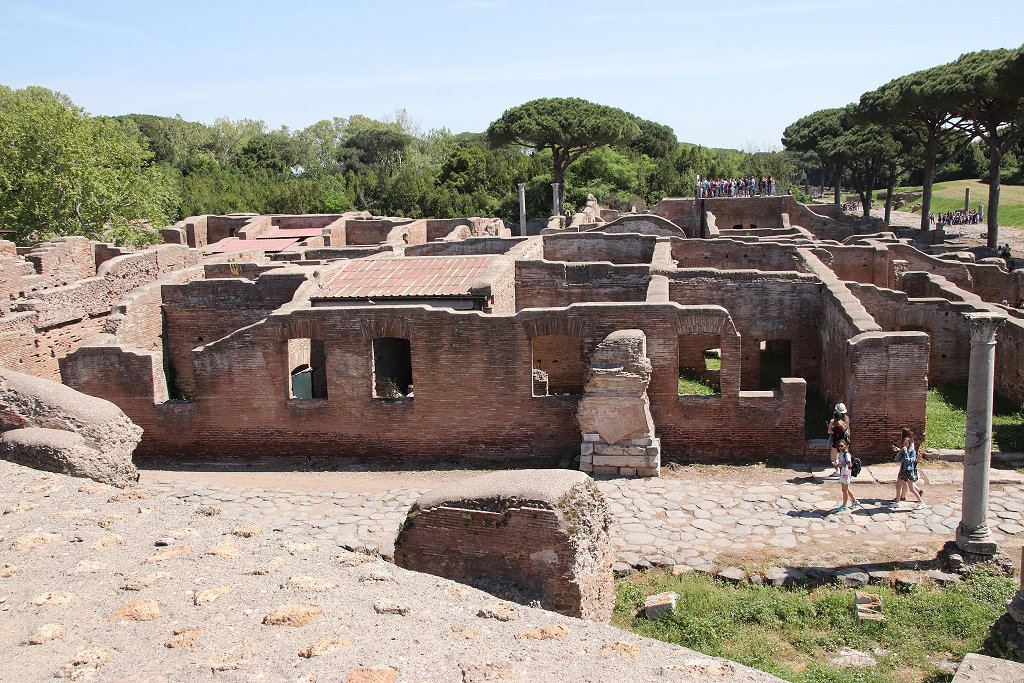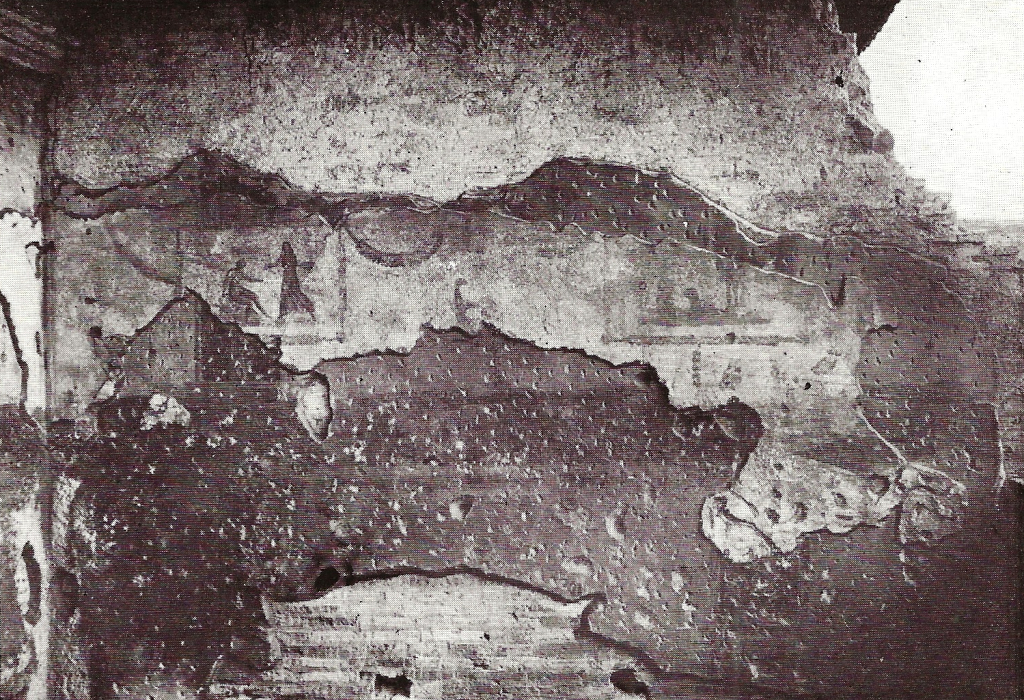|
The southern part of block VI has been dated to the reign of Hadrian (opus latericium). The east half, on Via della Fontana, consists of five shops (II,VI,4). In the fourth shop from the north a large basin was found. The southernmost shop has a door in the west wall, leading to a shop in the west half. The shops have floors of opus spicatum. The west half, on Via delle Corporazioni, is a medianum-apartment (with a "room in the middle"), the House of the Infant Hercules (II,VI,3). It was excavated in 1913. The apartment was entered from the north, from a passage running from street to street, and then through a corridor along an internal staircase. Apparently the first upper floor formed part of the apartment. A door in the east wall of the corridor led to a shop, as did a door in room 1. At an unknown point in time modifications took place: the door in the east wall of the corridor was blocked, a door was opened in the west wall of room 1, the entrance of room 2 was narrowed, and a new room 3 was created. Most of the painted wall-decoration was taken to the storage rooms. There were two, perhaps three layers. In room 1 only a few traces were left. In room 2 Guido Calza saw white and yellow panels with flowers, and underneath yellow panels surrounded by red bands with little paintings of landscapes. In room 3 was a first layer with two horizontal zones, separated by a wide red band. White and yellow panels were separated by yellow-white aediculae on a red background. The top layer had a white background with garlands of red flowers, scattered flowers and green leaves. In the centre of the back wall was a frame with the depiction of a child: the infant Hercules, strangling the snakes. At the ends of the wall were red bands in the shape of an 8 and birds. The north wall had two little panels, but only the one in the rear part of the room was preserved. It had a depiction of a seated woman and of a naked seated man with helmet and shield. They could be Mars and Venus. Below and to the right was a flamingo pecking a flower, and below that an imitation of marble, including a hexagon. On the south wall were two panels, both preserved. The one at the back had a depiction of a seated and a standing woman. The seated woman, to the left, was naked, holding two javelins and stretching out her left arm to the other woman. The woman to the right moves toward her. She has a long dress, covering also the head. In her right hand is an object. We might see the myth of the huntress Atalanta receiving three golden apples from Aphrodite. The other panel had a depiction of a seated figure and a standing naked man holding a shield. They might be Mars and Rhea Silvia. On this wall too were scattered flowers and birds. The second layer could belong to the reign of Commodus, the third to the (first half of?) the third century, in view of the imitation of opus sectile. It is quite surprising that expensive apartments are located in this busy part of town: to the east of the theatre and the Square of the Corporations, to the west of the large, Imperial Baths of Neptune, near the Barracks of the Fire Brigade, from which fire fighters would regularly rush out. Perhaps the aparments were used by people working for the Imperial government, present in the centre of town as a sign of good will and direct involvement. Among the finds from the apartment were two groups of coins. The first, of 110 pieces, ranges from Constantius to Theodosius (379-395 AD). The second, of 896 pieces, was found near a broken amphora and ranges from Diocletianus to Theodosius, but also contained many coins of Joannes, usurper against Valentinian III in 423-425 AD. |
 Plan of the house. After SO I. |













